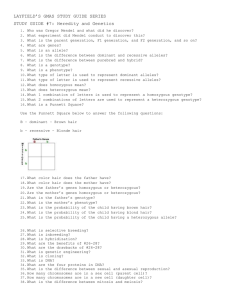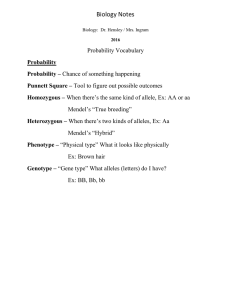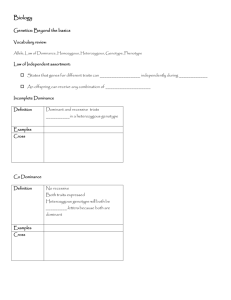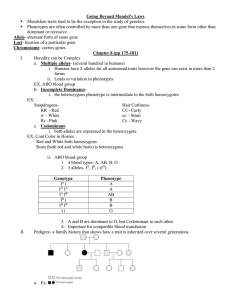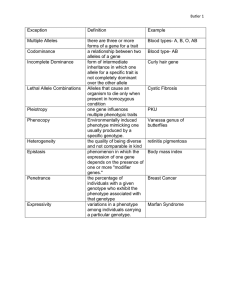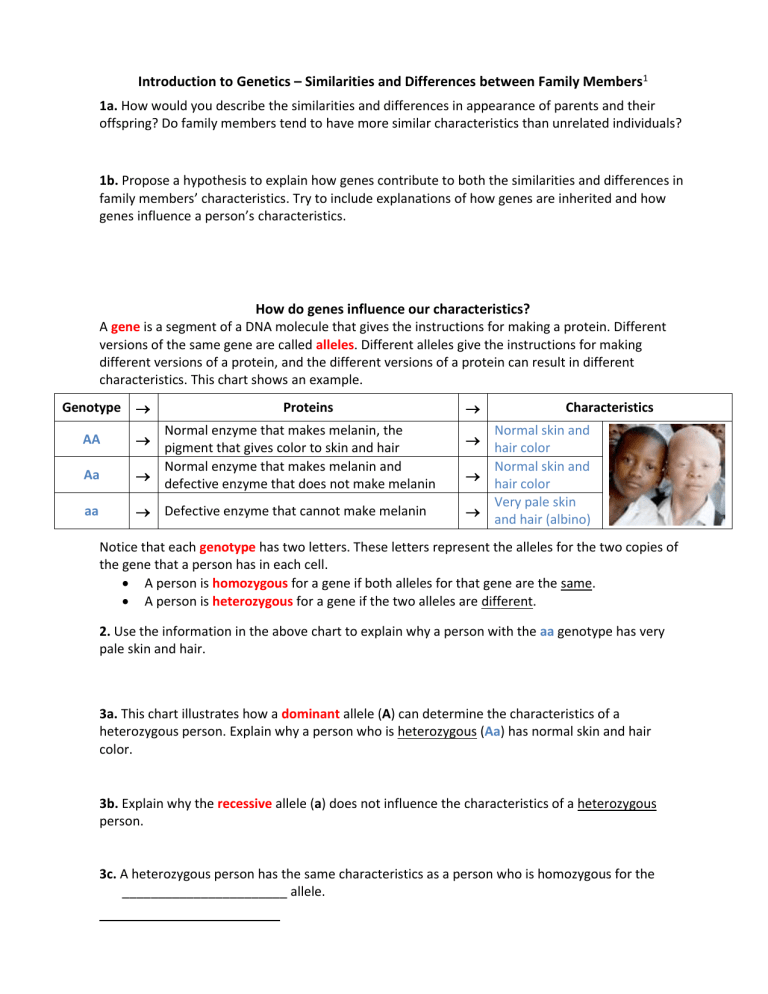
Introduction to Genetics – Similarities and Differences between Family Members1 1a. How would you describe the similarities and differences in appearance of parents and their offspring? Do family members tend to have more similar characteristics than unrelated individuals? 1b. Propose a hypothesis to explain how genes contribute to both the similarities and differences in family members’ characteristics. Try to include explanations of how genes are inherited and how genes influence a person’s characteristics. How do genes influence our characteristics? A gene is a segment of a DNA molecule that gives the instructions for making a protein. Different versions of the same gene are called alleles. Different alleles give the instructions for making different versions of a protein, and the different versions of a protein can result in different characteristics. This chart shows an example. Genotype AA Aa aa Proteins Normal enzyme that makes melanin, the pigment that gives color to skin and hair Normal enzyme that makes melanin and defective enzyme that does not make melanin Defective enzyme that cannot make melanin Characteristics Normal skin and hair color Normal skin and hair color Very pale skin and hair (albino) Notice that each genotype has two letters. These letters represent the alleles for the two copies of the gene that a person has in each cell. A person is homozygous for a gene if both alleles for that gene are the same. A person is heterozygous for a gene if the two alleles are different. 2. Use the information in the above chart to explain why a person with the aa genotype has very pale skin and hair. 3a. This chart illustrates how a dominant allele (A) can determine the characteristics of a heterozygous person. Explain why a person who is heterozygous (Aa) has normal skin and hair color. 3b. Explain why the recessive allele (a) does not influence the characteristics of a heterozygous person. 3c. A heterozygous person has the same characteristics as a person who is homozygous for the _______________________ allele. (choose: dominant OR recessive) 2
